Choquequirao – ‘Cradle Of Gold’ – The Last Stronghold Of The Incas’ Resistance To The Spaniards
A. Sutherland - AncientPages.com - Choquequirao ("Cradle of Gold" - Cuna de Oro” was the Inca’s last stronghold of resistance to the Spanish domain and a political, religious, and social center of the Inca Empire.
Image credit: Adobe Stock - erick
The site aligns with the June and December solstices, suggesting a solid solar focus and year-round ceremonial activities.
The archaeological complex of Choquequirao stands as a significant symbol of Andean resistance. It is located 3085 meters above sea level, at the summit of a mountain covered with green growth, on a narrow ridge above the Apurimac River in a remote region of the Vilcabamba of Peru.
The site was built as a royal estate during the late 15th century by the Inca ruler, Topa Inca Yupanki, modeled after Machu Picchu, and it shares with Machu Picchu the remoteness usually found in many pilgrimage centers of the world.
Also, its strategic location - equally as dramatic as Machu Picchu - high in the Andes mountains allowed it to remain unconquered for a considerable period, serving as a refuge for those who refused to submit to Spanish rule. The site's impressive terraces, plazas, and structures witness the resilience and determination of the Andean people in defending their way of life against foreign invasion.
Choquequirao's rugged area made it a formidable stronghold, providing a defensive advantage for the Inca forces. Its construction was not intended to facilitate effortless accessibility. Workers imported from Chachapoyas in Northern Peru participated in this construction.
They did not intend to make Choquequirao a place of easy access. The Inca's bastion effectively fulfilled its purpose for the descendants of the Inca civilization for a substantial period exceeding four decades.
Choquequirao, Cusco - Peru. Image credit: Adobe Stock - christian
Choquequirao, a citadel believed to be one of the "Lost Cities of the Incas," was officially rediscovered in the late 20th century. The settlement forms part of the Choquequirao Archaeological Park, a protected area preserving the region's rich cultural heritage. It is among several lost cities in the region where the refuge was sought in 1536.
It is believed that Choquequirao was one of the walled and fortified checkpoints to the Vilcabamba Valley, and the fortifications played a crucial role in controlling access to the valley, a significant area during the Inca era.
This remarkable complex was constructed on a stone foundation during the final years of the Inca Empire, spanning from 1471 to 1527. Spanning an area of approximately 2 hectares, it comprises an impressive nine architectural stone zones and an intricate system of 180 platforms.
The ancient Choquequirao site is a testament to the advanced engineering and architectural capabilities of the Inca civilization.
Beautiful terraces and cascade, Inca House. Image credit: Harley Calvert - CC BY-SA 3.0
The residential zone includes houses called piquiwasi. Large niches on the walls and two or three-level rooms are common in almost every building. The massive stonewalls are fused with mud.
The royal residences of Choquequirao were owned by the Inca monarch Tupac Yupanqui, and this was considered a demonstration of power but also a spiritual and symbolic factor; the latter rose motivated by his death.
Regarding the ‘Choquequirao’ name, it is essential to note that this site was not primarily focused on extracting gold or silver. Instead, it had a sacred significance.
Interestingly, in the Aymara language, widely spoken in the Peruvian Andes, the word "Choque" is associated with gold. Still, it also refers to anything that shines or has a striking visual quality. It could include the sun, thunder, stones, or any other visually striking and valuable element.
Choquequirao Inca ruins. Image credit: Adobe Stock - Daniel Prudek
Thus, Choquequirao is unique because it reflects the site's sacred and visually striking nature, not its role in mining precious metals.
After abandoning the city of Cusco due to the Spanish invasion, they hid among the mountains. There, for years, they generated resistance against the conquerors until, in 1572, the last Sapa Inca, Tupac Amaru I, was captured and
Choquequirao was later abandoned for more than 300 years.
The ceremonial zone located around the Main Plaza, with palaces and two-story temples, an impressive system of fountains, canals, and aqueducts, and admirable cultivation terraces, the so-called ‘andenes’, is, in fact, comparable with Machu Picchu.
The construction of Choquequirao is attributed to the successors of Inca Pachacutec, specifically Tupac Inca Yupanqui (1471-1493) and Wayna Capac (1493-1527). This archaeological site in the Cusco Region of Peru is a remarkable example of Inca architecture and engineering, reflecting the advanced skills and techniques employed by these rulers during their reigns.
The identity of the individual responsible for initiating the construction of the stronghold has been a subject of ongoing debate. While some scholars have proposed that Pachacutec was the driving force behind this endeavor, other researchers have argued that the Inca ruler Tupac Yupanqui was the mastermind behind the fortification's erection.
Choquequirao Inca ruins in Peru terraced fields. Image credit: Adobe Stock - Daniel Prudek
Archaeologists unearthed households and ceremonial pottery in the classic Cuzco style. The site was a sacred sanctuary dedicated to venerating various deities central to the Inca belief system.
It was a place of reverence for the Sun God, their ancestors, the land they inhabited, water sources, and other divine entities that held profound significance in their religious traditions.
The research findings in this area have revealed that before serving as a bastion of resistance, Choquequirao was the most significant political-religious center in the entire Cusco region.
It stood out prominently for its sophisticated fountains system, surpassing even the aqueduct systems found in major European metropolises of the time.
This discovery highlights the ancient inhabitants' advanced engineering and architectural capabilities, demonstrating their mastery of water management and urban planning.
Cosme Well, a historian, was the first to announce the existence of Choquequirao in 1768 publicly. Subsequently, in the 19th century, the French explorers Eugen de Santiges and Leónce Angrand officially confirmed the site's existence. These historical accounts brought Choquequirao to the wider world's attention, providing valuable information about this significant archaeological site.
In 1865, French photographer Emilio Colpaert documented various areas of Peru through his lens. One of his notable contributions was mapping the horseshoe-shaped path that connected Cachora to Choquequirao, an ancient Inca site in the Cusco region. Colpaert's visual records and detailed mapping provided valuable insights into the region's geographical and historical landmarks.
In 1911, Hiram Bingham, an American academic, explorer, and politician, made a significant discovery that confirmed the importance of the Choquequirao site. Bingham, renowned for uncovering the ancient Incan citadel of Machu Picchu in the same year, recognized the historical and archaeological value of Choquequirao.
Many experts believe Choquequirao was the largest and most significant religious center in the Cusco region, surpassing even the renowned Machu Picchu in importance.
According to theories, the inhabitants of Choquequirao were primarily priests and individuals who had earned the favor and appreciation of the deities. This site is thought to have played a crucial role in the ancient Andean civilization's religious practices and spiritual beliefs.
Written by – A. Sutherland - AncientPages.com Senior Staff Writer
Copyright © AncientPages.com All rights reserved. This material may not be published, broadcast, rewritten or redistributed in whole or part without the express written permission of AncientPages.com
Expand for referencesReferences:
Prescott William H. History of the Conquest of Peru
Mia Garcia-Son and Einar Felix Hansen, The History of Peru: From Machu Picchu to Modernity
The Other Machu Picchu, The New York Times
Newman, S., The Inca Empire (A True Book: Ancient Civilizations)
More From Ancient Pages
-
 Strange Ancient Artifacts And Foreigners Who Were Not Meant To Be In North America
Artifacts | Mar 16, 2020
Strange Ancient Artifacts And Foreigners Who Were Not Meant To Be In North America
Artifacts | Mar 16, 2020 -
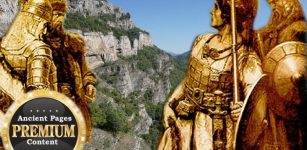 Unexplained Disappearance Of East Balkan Civilizations – Discovery Of Unusual Mini Artifacts – Part 1
Civilizations | Apr 28, 2018
Unexplained Disappearance Of East Balkan Civilizations – Discovery Of Unusual Mini Artifacts – Part 1
Civilizations | Apr 28, 2018 -
 Ashvins: Vedic Twin Gods Of Medicine And Healing Were Skilled Surgeons
Featured Stories | Feb 1, 2019
Ashvins: Vedic Twin Gods Of Medicine And Healing Were Skilled Surgeons
Featured Stories | Feb 1, 2019 -
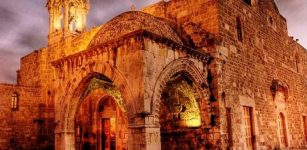 Ancient Byblos: Powerful Phoenician City With Own Kings
Civilizations | Apr 23, 2016
Ancient Byblos: Powerful Phoenician City With Own Kings
Civilizations | Apr 23, 2016 -
 Cooper’s Ferry Site In Western Idaho Was Inhabited 16,000 Years Ago
Archaeology | Sep 3, 2019
Cooper’s Ferry Site In Western Idaho Was Inhabited 16,000 Years Ago
Archaeology | Sep 3, 2019 -
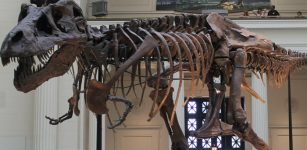 On This Day In History: ‘Sue’ Largest Tyrannosaurus Rex Skeleton Discovered In South Dakota – On August 12, 1990
News | Aug 12, 2016
On This Day In History: ‘Sue’ Largest Tyrannosaurus Rex Skeleton Discovered In South Dakota – On August 12, 1990
News | Aug 12, 2016 -
 On This Day In History: Father Of Nation Mahatma Gandhi Was Born – On Oct 2, 1869
News | Oct 2, 2016
On This Day In History: Father Of Nation Mahatma Gandhi Was Born – On Oct 2, 1869
News | Oct 2, 2016 -
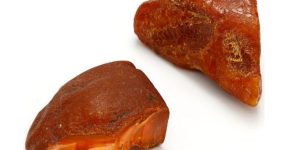 Bronze Age Long-Distance Connections: Baltic Amber In Aššur
Archaeology | May 17, 2023
Bronze Age Long-Distance Connections: Baltic Amber In Aššur
Archaeology | May 17, 2023 -
 Legend Of Nebraska’s Salt Witch And Her Deadly Encounter With A Native American Chief
Featured Stories | Sep 11, 2019
Legend Of Nebraska’s Salt Witch And Her Deadly Encounter With A Native American Chief
Featured Stories | Sep 11, 2019 -
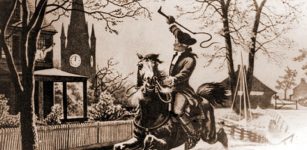 On This Day In History: National Hero Paul Revere Warns Of The British Coming – On Apr 18, 1775
News | Apr 18, 2016
On This Day In History: National Hero Paul Revere Warns Of The British Coming – On Apr 18, 1775
News | Apr 18, 2016 -
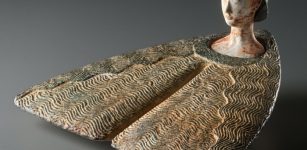 Strange Flat Idol Sculpture From Bactria Remains Unexplained
Artifacts | Sep 26, 2019
Strange Flat Idol Sculpture From Bactria Remains Unexplained
Artifacts | Sep 26, 2019 -
 Daily Life Of A Lady In Waiting – A Dangerous Profession Sometimes
Ancient History Facts | Aug 24, 2023
Daily Life Of A Lady In Waiting – A Dangerous Profession Sometimes
Ancient History Facts | Aug 24, 2023 -
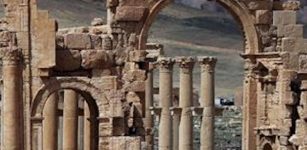 Arch Of Triumph In 2000-Year-Old City Of Palmyra – Destroyed
Archaeology | Oct 5, 2015
Arch Of Triumph In 2000-Year-Old City Of Palmyra – Destroyed
Archaeology | Oct 5, 2015 -
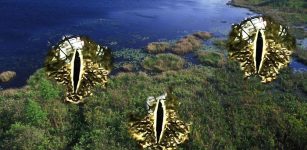 Mysterious Okefenokee Swamp – Fearsome Aerial Beings And Giant Skeletons In Georgia
Featured Stories | Aug 27, 2019
Mysterious Okefenokee Swamp – Fearsome Aerial Beings And Giant Skeletons In Georgia
Featured Stories | Aug 27, 2019 -
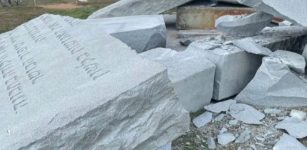 Georgia Guidestones Damaged By An Explosive Device – By Whom And Why?
News | Jul 7, 2022
Georgia Guidestones Damaged By An Explosive Device – By Whom And Why?
News | Jul 7, 2022 -
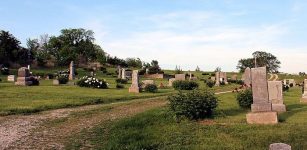 Mystery Of The Stull Cemetery: A Gateway To Hell?
Featured Stories | Aug 25, 2018
Mystery Of The Stull Cemetery: A Gateway To Hell?
Featured Stories | Aug 25, 2018 -
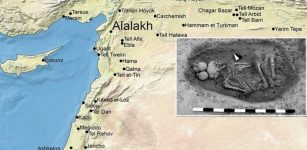 Researchers Study Human Mobility At The Bronze Age City Of Alalakh, Turkey
Archaeology | Jul 1, 2021
Researchers Study Human Mobility At The Bronze Age City Of Alalakh, Turkey
Archaeology | Jul 1, 2021 -
 Askeladden – Little Trickster That Succeeds Where All Others Fail
Featured Stories | Mar 23, 2018
Askeladden – Little Trickster That Succeeds Where All Others Fail
Featured Stories | Mar 23, 2018 -
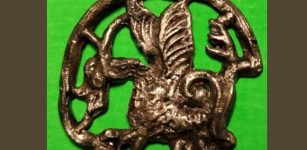 Medieval Pilgrim’s Badge (‘Pilgrim’s Sign’) Depicting A Basilisk Dragon In A Circle Discovered In Southeastern Poland
Artifacts | Mar 5, 2024
Medieval Pilgrim’s Badge (‘Pilgrim’s Sign’) Depicting A Basilisk Dragon In A Circle Discovered In Southeastern Poland
Artifacts | Mar 5, 2024 -
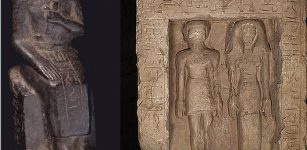 Excavation At Tell Edfu Reveals Early New Kingdom Complex
Archaeology | Jan 10, 2019
Excavation At Tell Edfu Reveals Early New Kingdom Complex
Archaeology | Jan 10, 2019





